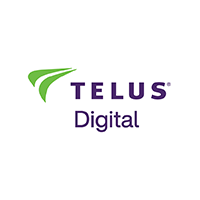Let’s face it, people. We’ve all been thrust into the wild world of digital conferences, whether or not we prefer it or not. Gone are the times of workplace huddles and convention room brawls over the past donut. Now, it’s all about who has the best digital background or the funniest Zoom filter. So, who reigns supreme on this new digital kingdom? Google Meet or Zoom? Buckle up, as a result of we’re diving deep into this face-off, with a sprinkle of humor and a splash of actionable recommendation.
Bear in mind the great outdated days when conferences had been simply excuses to get out of your cubicle? Yeah, me neither. Enter 2020, and all of the sudden everybody and their grandmother is a Zoom skilled. However wait, right here comes Google Meet, strutting in prefer it owns the place. So, which one must you be utilizing?
Image this: It’s Monday morning, and also you’re half asleep, nursing your third cup of espresso. You’ve received a gathering in 5 minutes. Panic units in as you scramble to recollect which platform your boss likes. Sound acquainted?
This text is right here to save lots of the day. We’re breaking down Google Meet and Zoom, head-to-head, in a no-holds-barred comparability. We’ll take a look at the great, the unhealthy, and the ugly of each, so you may make an knowledgeable resolution with out tearing your hair out. Let’s get began with a take a look at Google Meet.
Google Meet: The Professionals
Straightforward Integration With Google Workspace
- Seamless Scheduling: In the event you’re already utilizing Google Calendar, Google Meet is your greatest buddy. You’ll be able to schedule conferences instantly out of your calendar. No additional steps, no trouble. Simply click on, invite, and also you’re finished. This integration is a lifesaver for busy professionals who want all the pieces in a single place.
- Single Signal-On: Utilizing your Google account for all the pieces? Nice! No want to recollect one other password. Simply sign up, and also you’re good to go. This reduces friction and makes it straightforward to leap into conferences shortly.
- Built-in with Google Drive: Share paperwork, spreadsheets, and shows with out leaving the assembly. It’s all there, proper at your fingertips. This integration makes collaboration smoother, particularly for groups already embedded within the Google ecosystem.
Consumer-Pleasant Interface
- Clear and Easy: The interface is easy and simple to navigate. No litter, no confusion. Even your technophobe uncle can determine it out. This simplicity is nice for lowering assembly setup time and minimizing consumer errors.
- Minimal Studying Curve: You don’t want a level in laptop science to start out utilizing Google Meet. It’s intuitive and user-friendly. That is ultimate for organizations with various ranges of tech-savviness amongst staff.
- Fast Entry: Begin a gathering out of your browser while not having to obtain something. Excellent for these impromptu catch-ups. That is notably helpful for fast conferences or when coping with individuals who usually are not tech-savvy.
Safety and Privateness
- Encrypted Calls: All Google Meet calls are encrypted, protecting your conversations non-public and safe. That is essential for companies that take care of delicate data.
- Managed Entry: You’ll be able to management who joins your conferences with numerous safety settings. No extra Zoom-bombing! These settings assist be certain that solely invited individuals can be a part of, enhancing total safety.
- Protected Knowledge: Google’s sturdy infrastructure ensures your information is secure. Sleep straightforward understanding your data is protected. Google’s dedication to information safety is a giant promoting level for a lot of companies.
Further Options and Instruments
- Stay Captioning: Google Meet gives real-time captions, which could be extremely helpful for individuals who’re laborious of listening to or if you’re coping with totally different accents and audio high quality points.
- Background Blur: In the event you’re working from house and need to conceal your messy room, Google Meet’s background blur function is an easy, efficient resolution.
- Jamboard Integration: For individuals who love brainstorming periods, Google Meet integrates with Jamboard, Google’s interactive whiteboard, to facilitate extra dynamic and interactive conferences.
Google Meet: The Cons
Restricted Options in Free Model
- No Breakout Rooms: Not like Zoom, Google Meet doesn’t supply breakout rooms in its free model. Powerful luck for those who want small group discussions. This could be a vital limitation for educators and trainers.
- Quick Assembly Length: Free conferences are restricted to 60 minutes. Nice for fast chats, however not for lengthy brainstorming periods. This time restrict could be a constraint for longer conferences or in-depth discussions.
- Restricted Customization: You’ll be able to’t get too fancy with backgrounds or filters. What you see is just about what you get. This won’t be a deal-breaker, nevertheless it does restrict the enjoyable and personalization facet of conferences.
Depending on Web High quality
- Bandwidth Points: In case your web connection is spotty, count on a bumpy trip. Google Meet isn’t forgiving with poor bandwidth. This will result in dropped calls and irritating consumer experiences.
- No Offline Mode: You’ll be able to’t pre-download conferences or work offline. It’s all about that reside, real-time connection. This reliance on a secure web connection could be a downside in areas with unreliable service.
- Lag and Delay: Typically, there’s a noticeable delay in audio or video. Annoying, however manageable with an excellent connection. These points can disrupt the movement of conferences and make communication much less efficient.
Lack of Superior Options
- Primary Recording: Recording is offered, nevertheless it’s fairly fundamental. Don’t count on Hollywood-level manufacturing high quality. This could be a draw back for many who want detailed or high-quality recordings for later use.
- Restricted Collaboration Instruments: It integrates effectively with Google apps, however exterior of that ecosystem, it’s fairly restricted. This could be a downside for groups that depend on a wide range of instruments and software program.
- No Polls or Surveys: In the event you like partaking your viewers with interactive options, Google Meet may really feel missing. These interactive instruments are sometimes utilized in academic and company settings to maintain individuals engaged.
Zoom: The Professionals
Characteristic-Wealthy Platform
- Breakout Rooms: Excellent for workshops or group discussions. Simply break up your assembly into smaller teams. This function is a favourite amongst educators and facilitators.
- Digital Backgrounds: Whether or not you’re hiding a messy room or simply need to faux you’re on a seaside, Zoom’s received you lined. This provides a enjoyable ingredient to conferences and permits for extra skilled appearances.
- Polls and Surveys: Interact your individuals with real-time polls and surveys. Nice for suggestions and interplay. These instruments may help hold individuals engaged and acquire useful information.
Excessive-High quality Video and Audio
- HD Video: Crystal clear video high quality, assuming your web can deal with it. This makes a giant distinction in skilled settings the place picture high quality issues.
- Audio Choices: A number of audio choices guarantee you may hear and be heard clearly. This flexibility is nice for guaranteeing efficient communication in numerous environments.
- Low Latency: Much less lag, extra seamless conversations. No one likes speaking to one another. This clean efficiency is a big benefit for sustaining the movement of conferences.
Scalability and Flexibility
- https://remoteworkwise.com/best-laptop-for-zoom-meetings/Massive Conferences: Host as much as 100 individuals within the free model and as much as 1,000 with paid plans. Preferrred for large occasions. This scalability makes Zoom a flexible possibility for various kinds of conferences.
- Webinar Mode: Skilled webinars with Q&A, polls, and registration choices. Excellent for big audiences. This mode is tailor-made for shows and may help handle giant teams successfully.
- Cross-Platform: Works on just about any machine. Cellphone, pill, desktop – you identify it. This flexibility ensures that individuals can be a part of from anyplace, utilizing any machine.
Further Options and Instruments
- Display screen Sharing: Zoom’s display sharing is strong, permitting for simultaneous sharing by a number of individuals. This function is important for collaborative work and shows.
- Recording and Transcripts: Zoom offers detailed recording choices and might even generate transcripts, that are helpful for later overview and documentation.
- Ready Rooms: Management who enters your assembly with ready rooms, a function that enhances safety and ensures that solely supposed individuals be a part of the session.
Zoom: The Cons
Safety Issues
- Previous Safety Points: Zoom has had its share of safety issues, from Zoom bombing to information breaches. They’ve improved, however the previous nonetheless haunts them. This historical past could make some customers cautious.
- Privateness Issues: There have been issues about information privateness and the way Zoom handles consumer data. Whereas enhancements have been made, these points nonetheless linger within the minds of many customers.
- Frequent Updates: Fixed updates could be a headache. Maintaining with the most recent model is important for safety however could be annoying. These updates, whereas vital, could be disruptive.
Overwhelming Interface for Newbies
- Steeper Studying Curve: With so many options, it may be overwhelming for brand new customers. Anticipate a little bit of a studying curve. This could be a barrier for many who must rise up and operating shortly.
- Advanced Settings: Numerous settings to tweak for the perfect expertise. Not precisely plug-and-play. This complexity could be daunting for customers preferring simplicity.
- Not All the time Intuitive: Some options aren’t as intuitive as they might be. You may must dig round to search out what you want. This will decelerate the consumer expertise and trigger frustration.
Expensive for Superior Options
- Costly Plans: The free model is proscribed, and superior options come at a value. Not ultimate for those who’re on a good finances. This could be a vital draw back for small companies and people.
- Add-On Prices: Need extra storage or additional options? Be ready to pay additional. These further prices can add up shortly.
- Annual Dedication: Some plans require a yearly dedication, which could be a huge ask for small companies or people. This dedication could be a monetary burden and restrict flexibility.
Bandwidth Necessities
- Excessive Bandwidth Wants: For optimum efficiency, Zoom requires a robust web connection. Poor connections may end up in decrease video and audio high quality. This could be a problem in areas with much less dependable web service.
- Knowledge Utilization: Zoom can eat a big quantity of knowledge, which is one thing to think about for those who’re on a restricted information plan. This may be a problem for customers with information caps or slower web speeds.
Compatibility Points
- Software program Compatibility: Whereas Zoom works on many units, there could be compatibility points with sure working methods or older {hardware}. This will restrict accessibility for some customers.
- Browser Limitations: Whereas Zoom has an internet consumer, it’s not as sturdy because the desktop software. Some options could also be restricted or unavailable within the browser model, which might affect usability.
Detailed Comparability
Interface and Usability
- Google Meet: Identified for its clear and easy interface, Google Meet is simple to navigate. The minimalist design reduces distractions and makes it accessible even for much less tech-savvy customers.
- Zoom: Whereas Zoom’s interface is user-friendly, it gives extra options, which might make it seem cluttered to some customers. The training curve is steeper, however the payoff is a wealthy set of instruments for numerous assembly wants.
Assembly Setup and Scheduling
- Google Meet: Seamlessly integrates with Google Calendar, making scheduling a breeze. You’ll be able to arrange a gathering in a number of clicks and ship invitations instantly out of your calendar.
- Zoom: Provides in depth scheduling choices, together with integration with numerous calendar methods like Outlook and Google Calendar. Nonetheless, establishing a gathering could be barely extra complicated as a result of plethora of choices obtainable.
Collaboration Instruments
- Google Meet: Greatest fitted to customers already throughout the Google ecosystem, providing clean integration with Google Docs, Sheets, and Slides. Nonetheless, its collaboration instruments are considerably fundamental in comparison with Zoom.
- Zoom: Boasts a variety of collaboration instruments, together with display sharing, whiteboards, and annotation options. These instruments make it a strong platform for interactive periods and detailed shows.
Customization and Personalization
- Google Meet: Provides restricted customization choices. Background blur is offered, however digital backgrounds and filters usually are not as superior or assorted as these in Zoom.
- Zoom: Excels in customization, providing a wide range of digital backgrounds, filters, and even enjoyable options like digital masks. These choices could make conferences extra partaking and visually interesting.
Recording and Playback
- Google Meet: Recording is offered, nevertheless it’s pretty fundamental and instantly linked to Google Drive. The recordings are easy and simple to entry however lack superior enhancing options.
- Zoom: Offers detailed recording choices, together with cloud storage and native storage decisions. Moreover, Zoom gives automated transcription, making it simpler to overview and share assembly content material.
Assist and Reliability
- Google Meet: Usually dependable with glorious assist, particularly for those who’re already a Google Workspace consumer. The assist system is strong however could be much less private on account of its reliance on automated assist methods.
- Zoom: Provides in depth assist choices, together with reside chat, e-mail assist, and an enormous library of assets. Its reliability is robust, however it might probably often endure from glitches, particularly throughout high-traffic intervals.
Actual-World Use Circumstances
Schooling
- Google Meet: Many academic establishments favor Google Meet on account of its integration with Google Classroom. It’s straightforward for lecturers and college students to affix conferences utilizing their current Google accounts.
- Zoom: Widespread in schooling for its breakout rooms, permitting for small group discussions and extra interactive studying experiences. Zoom’s sturdy function set makes it a flexible instrument for educators.
Company Conferences
- Google Meet: Preferrred for companies already utilizing Google Workspace. It simplifies assembly scheduling and doc sharing throughout the Google ecosystem.
- Zoom: Most popular for large-scale company conferences, webinars, and occasions. Its scalability and feature-rich setting make it appropriate for complicated enterprise wants.
Private Use
- Google Meet: Nice for fast, impromptu conferences or catch-ups with family and friends. Its simplicity and ease of use make it accessible to informal customers.
- Zoom: Provides extra enjoyable options like digital backgrounds and filters, making it a favourite for social gatherings, digital events, and household get-togethers.
Healthcare
- Google Meet: Offers a safe platform for telehealth consultations, particularly for healthcare suppliers utilizing Google Workspace. Its encryption and safety features are essential for affected person privateness.
- Zoom: Broadly utilized in healthcare for telemedicine on account of its HIPAA-compliant plans. The flexibleness and sturdy function set of Zoom make it a dependable alternative for digital consultations.
Ideas for Selecting the Proper Platform
Assess Your Wants
- Variety of Members: Contemplate the variety of individuals you sometimes have. In the event you incessantly host giant conferences, Zoom’s scalability may be vital.
- Characteristic Necessities: Determine which options are must-haves for you. Do you want breakout rooms, polls, and superior collaboration instruments? Zoom may be your go-to. In the event you want seamless integration with Google apps, Google Meet is the higher alternative.
Finances Issues
- Free vs. Paid Plans: Each platforms supply free variations, however superior options include paid plans. Consider your finances and decide which paid plan (if any) suits your wants.
- Further Prices: Contemplate potential further prices, corresponding to storage for recordings or additional safety features. Zoom could be costlier total however gives extra superior options.
Integration with Present Instruments
- Present Software program: Have a look at the software program and instruments you presently use. In case your workforce depends closely on Google Workspace, Google Meet is a no brainer. In the event you use a wide range of instruments, Zoom’s broad compatibility may be extra helpful.
Consumer Talent Stage
- Tech Savviness: Contemplate the technical talent stage of your workforce or individuals. If simplicity and ease of use are priorities, Google Meet’s easy interface is advantageous. For a extra tech-savvy viewers, Zoom’s superior options can present extra performance.
FAQs
1. Which platform is best for big conferences?
In the event you’re planning a big assembly or occasion, Zoom is the clear winner. The free model helps as much as 100 individuals, and paid plans go as much as 1,000. Plus, Zoom’s webinar mode is ideal for big audiences, providing options like Q&A, polls, and registration choices. Google Meet, whereas respectable, maxes out at 250 individuals, even with its paid plans.
2. Can I exploit each Google Meet and Zoom for various functions?
Completely! Many individuals use each platforms relying on their wants. As an example, you may use Google Meet for fast workforce catch-ups and Zoom for bigger shows or webinars. Each have their strengths and might complement one another effectively. It’s all about discovering what works greatest for you and your workforce.
3. Is Google Meet safer than Zoom?
Safety is a high precedence for each platforms, however they’ve had totally different journeys. Google Meet advantages from Google’s sturdy safety infrastructure, providing encrypted calls and managed entry. Zoom, nevertheless, has had its share of safety points previously, although they’ve made vital enhancements. Each are safe, however for those who’re notably cautious, Google Meet may edge out barely.
4. Do I must obtain something to make use of these platforms?
For Google Meet, no downloads are wanted for those who’re utilizing a browser – simply click on the hyperlink and also you’re in. Zoom, then again, does require you to obtain a consumer for the perfect expertise, although there’s an internet model obtainable too. The consumer offers extra options and a smoother expertise, nevertheless it’s an additional step in comparison with Google Meet.
5. How do the free variations examine?
Google Meet’s free model gives conferences of as much as 60 minutes with as much as 100 individuals. It’s nice for fast, easy conferences. Zoom’s free model additionally helps as much as 100 individuals, however conferences are capped at 40 minutes. Nonetheless, Zoom gives extra options even in its free tier, like digital backgrounds and breakout rooms. In the event you want longer conferences or extra superior options, Zoom may be price the price.
6. Which platform is best for digital backgrounds and enjoyable options?
Relating to spicing up your digital conferences with cool backgrounds and enjoyable options, Zoom wins palms down. Zoom gives a various number of digital backgrounds, starting from skilled settings to whimsical designs. Whether or not you’re hiding a cluttered area or including a contact of creativity, Zoom’s digital backgrounds are positive to impress. In distinction, Google Meet’s choices are extra restricted. Whereas it gives background blur to attenuate distractions, it lacks the in depth vary of digital backgrounds and enjoyable filters that Zoom offers. For these trying so as to add a little bit of aptitude and persona to their digital conferences, Zoom stands out as the popular alternative with its wealthy number of inventive customization choices.
Conclusion
Selecting between Google Meet and Zoom isn’t a one-size-fits-all resolution. It boils right down to what you want to your digital interactions. In the event you’re already embedded within the Google ecosystem and want one thing easy, Google Meet is your go-to. It’s easy, safe, and integrates seamlessly with Google’s different instruments.
On the flip aspect, for those who’re searching for a feature-packed platform that may deal with all the pieces from informal catch-ups to huge webinars, Zoom is difficult to beat. Sure, it has a little bit of a studying curve and a few safety skeletons in its closet, however its versatility and wealthy function set make it a strong instrument for any digital assembly state of affairs.
So, subsequent time you’re scrambling for that Monday morning assembly, you’ll know precisely which platform to fireplace up. Comfortable assembly, and will your Wi-Fi be ever in your favor!
Hello, I’m Zoë, the founding father of Distant Work Clever. For the previous decade, I’ve been immersed on the earth of distant work, collaborating with companies worldwide and main giant distant groups. Alongside my ventures in distant work, I additionally established Wild Lotus, a digital content material company.
Source link






